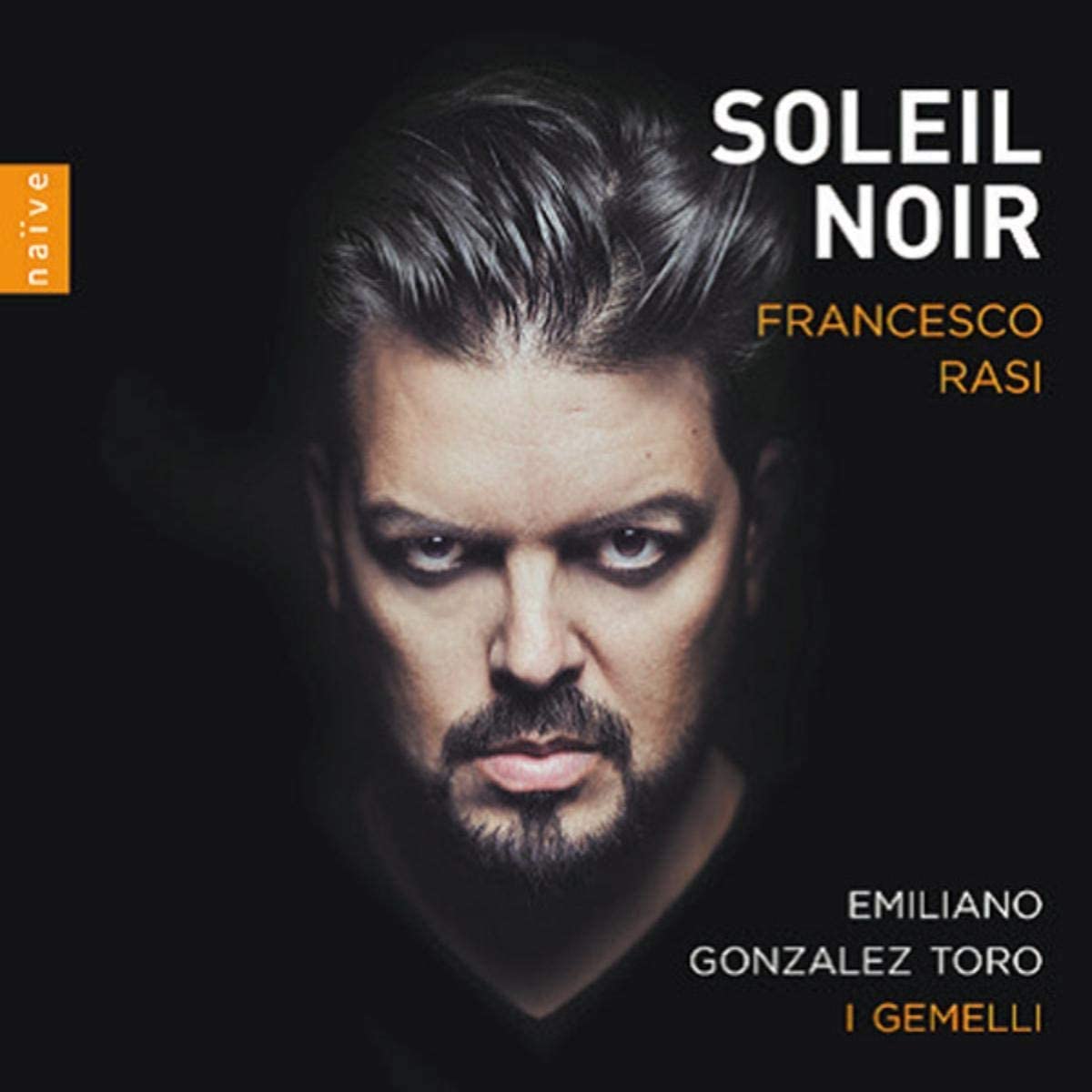Arie da e per Francesco Rasi 1574-1621
Emiliano Gonzalez Toro, I Gemelli
51:45
naïve V 5473
Click HERE to buy this on amazon.co.uk
[These sponsored links help the site remain alive and FREE!]
Don’t be put off by the sombre title (black sun) or the cover photo of a satanic-looking Emiliano Gonzalez Toro. Yes, there is darkness here, but there is also light, humour, joy and whimsy in this superbly performed collection of music from the late 16th/early 17th century.
It is centred on the music of one of the lesser-known composers of the day, Francesco Rasi (1574-1621). But like so many composers at the dawn of the new century Rasi was also a singer – and not just any old singer but one of the greatest of the period. Monteverdi enthusiasts will indeed need no reminding that he was the creator of the role of Orfeo in that composer’s eponymous opera. Born into a noble Tuscan family, Rasi studied with Caccini, becoming a singer and chitarrone player at the Florentine court. Later his colourful life led him to Rome, to Mantua (where he served the Gonzaga family and encountered Monteverdi), to travels in Italy with Gesualdo, to Poland and a ten-year exile from Tuscany after being implicated in a murder. Gonzalez Toro and his co-note writer Mathilde Etienne tell us that Rasi was a ‘dark, cruel and tormented figure’, a description that hardly accords with his contemporary Severo Bonini’s testimony that ‘his sweet and robust voice together with his majestic and cheerful countenance made his singing angelic and divine’.
‘Sweet and robust’ would provide an eloquent summation of the singing of Gonzalez Toro here. As he notes the present recording was done after much work on Monteverdi’s Orfeo, work that subsequently resulted in a superlative recording of the opera issued at the end of 2020. Appropriately enough the new CD opens with a quite stunning setting of a lament for Orfeo by Rasi himself. It embraces the whole armoury of technique employed by singers of the day, with ornamentation at least as extravagant as that Rasi provided for Monteverdi (which is what we today usually hear in performances of the latter’s opera), acutely observed word-setting, and the most internal of responses to sensitive and grief-laden passages. It’s an inspired piece that makes one greatly regret the loss of Rasi’s two operas. It is sung with all the superb technique and insight Gonzalez Toro brought to Monteverdi’s title role, with perfectly articulated ornamentation, acute, insightful attention to the text and where appropriate exquisite mezza voce singing that recalls to mind the ‘angelic and divine’ description of Rasi’s singing. Among six other pieces by Rasi, we are given in the opportunity to hear him with a more ‘cheerful countenance’ in the delightful ‘O che felice giorno’, a strophic song articulating the near-breathless ecstasy of the lover welcoming the beloved home after having been parted from him.
The recital is however by no means all about Rasi, including as it does music by other composers, intelligently chosen to complement his music with that of contemporaries with whom he was associated. For example, in 1608, the year after he had premiered Orfeo, Rasi sang the role of Apollo in Marco da Gagliano’s La Dafne, the heartfelt lament for Apollo in recitar cantando is included here in a performance notable for its elegance and style encompassing a range of emotions, the final prayer-like invocation sung with a graceful eloquence that touches the heart. To give mention to all the treasure here is not feasible in the context of a review, though I cannot resist the temptation to include Caccini’s strophic ‘Dalla porta d’Oriente, the playful exuberance of its hemiola rhythms irresistibly carried forward by Gonzalez Toro.
In addition to the vocal items, each member of the continuo ‘backing group’ (viola da gamba, harp and theorbo) is given a moment to shine, a well-deserved bonus for them and the listener. Two niggling complaints: the playing time is very short and, perhaps more seriously, the font used for the texts is absurdly small, about 8 I’d guess. Still, I’m not going to let that stop me enthusiastically hailing this wonderful CD by arguably the most stylish and finished interpreter of this repertoire singing today.
Brian Robins
